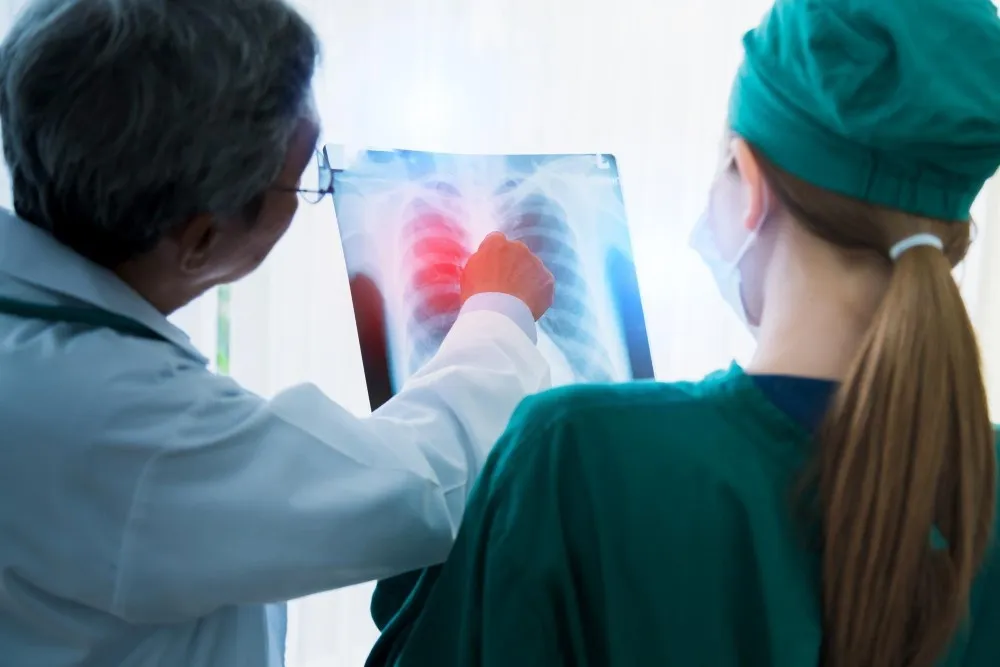It is often said that PREVENTION IS BETTER THAN CURE. However, in cases of breast cancer there are numerous inevitable factors that lead to its onset like aging, genetic disorders and gender. Being a female is a big risk factor as the presence of estrogen and progesterone can result in breast cancer cells growth. In such cases early detection and breast cancer screening goes a long way in ensuring that the patient can undergo a successful treatment. Breast cancer, if detected in time, can be cured completely making it even more important for women to identify the early signs of this disease.
Get Breast Cancer Treatment Cost in India from NABH & JCI accredited hospitals - FREE of cost.Early Signs of Breast Cancer
Being careful of the initial symptoms of breast cancer ensures that one can seek timely advice and treatment from the doctor. Some of the common symptoms of this disease are:-
- A lump or a thickening in or near the breast -In most cases the lump is not painful
- A lump or thickening in underarm area
- A change in size or shape of breast
- A dimple or puckering in skin of the breast
- Inward pulling of nipple
- Fluid, other than breast milk, especially if it is bloody
- Altered skin colour or texture of breast, nipple, areola
- Dimpling of skin of breast - like a skin of Orange
On the appearance of any of these symptoms, consult an experienced gynecologist at the earliest. Even the smallest hint of any of these signs appearing in the area needs to be taken seriously. The treatment can be easier and far more effective when the affected site is small and the cancer has not spread to surrounding areas.
Also read about Breast Cancer Risk Factors
Breast Cancer Screening
Breast Cancer can be detected in the early stages with the help of regular breast cancer screening or mammography.
Mammograms are X-Ray images of the breasts, giving the doctors a clear idea as to which part of the organ is affected. Mammograms can even detect these malignant tumors before the appearance of any symptoms. Annual breast examination by a doctor and an annual screening Mammography is advisable for the females more than 45 years of age. Women who are at higher risk of developing breast cancer, should consult go for it at an early age (after consulting the doctor).
Diagnosis of Breast Cancer
Mammogram
A mammogram is an X-ray that enables a specialist to examine the breast tissue for tumours. A small dose of iodising radiation produces an image of the breast tissue, and will show not only lumps or specks caused by cancer but also micro calcifications, lumps due to fatty cells and cysts. Further tests are required to confirm the presence of abnormal cells.
Breast Ultrasound
Specialists use penetrating sound waves and their deflection to create a computerised image of internal breast tissue. A breast ultrasound can differentially show a lump of solid mass, a cyst filled with fluid, or a combination of both. While cysts are mostly non-cancerous, a solid lump may indicate cancerous tumour. Breast ultrasound measures the exact size and location of the lump and the condition of its surrounding tissue.
Biopsy
A biopsy test involves removal of some tissue and fluid from the suspected area, examination under a microscope and other tests for presence of cancerous tissue. A biopsy report will provide a complete picture of your situation that includes benign or non-cancerous cells in the lump, type of tumour, tumour growth rate and grade, receptor status of tumour, and distance between excised tumour cells and surrounding normal tissue.
Breast magnetic resonance imaging (MRI)
A breast MRI provides a more conclusive evidence and assessment of the extent of cancer spread. Images generated by the transmission of magnetic energy and radio waves helps medical professionals to distinguish between a normal and tumorous breast tissue.
Read about What happens after Breast Cancer Diagnosis?
Stages of Breast Cancer
The treatment of breast cancer depends on staging of the disease. Based on results of breast cancer screening, it can be classified into 5 types, Stages 0-4. These stages are determined based in the spread of cancer and whether it is limited to the origin site or spread to the surrounding areas. The 5 stages are:
- Stage 0 - This stage indicates the precancerous condition. When cancer is detected in this stage, the disease can be cured very easily without having to undergo extensive procedures.
- Stages 1 & 2 - The cancerous growth is restricted to the breast area & to the lymph nodes in the area near to the breast or armpit.
- Stage 3 - The cancer cells have spread from the breast & armpit lymph nodes to the lymph nodes near to breastbone or collarbone or to the skin of breast & chest wall.
- Stage 4 - The cancer cells have spread from the breast & lymph nodes to the other organs like lungs, bones, brain, distant lymph nodes and liver.

Reviewed by







